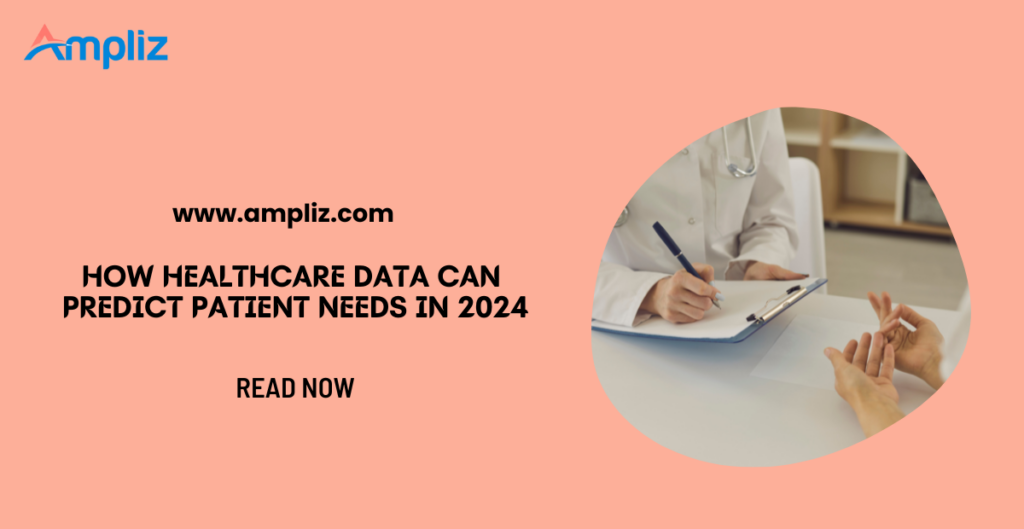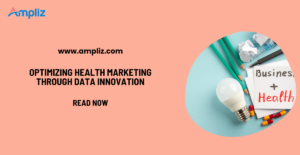Imagine a world where your doctor knows what you need before you do. Advancements in healthcare tech now make this possible, thanks to big data and AI. Think predictive analytics shaping chronic disease management. Or real-time monitoring with wearables fine-tuning treatments.
Shortly, we’ll be diving deep into how these innovations empower providers to deliver personalized care like never before.
You get smarter solutions and faster responses tailored just for you. Stay ahead of potential health issues as we explore how intelligent systems redefine the healthcare landscape.
Curious about these breakthroughs? Read on to uncover the future of medical innovation!
Leveraging Big Data for Better Health Predictions
Anyone who’s visited a healthcare facility for one reason or the other, has one very crucial record of information: medical history. This record holds a wealth of data regarding a person’s health journey. Healthcare providers now tap into this resource to forecast future health needs using big data.
These massive datasets analyze patterns across demographics, diseases, and treatments. They enable insights that might otherwise remain hidden.
Identifying trends in patient data informs proactive care decisions. This tech advances beyond treatment; it predicts potential issues before they arise.
It’s an exciting shift transforming preventive care by leveraging historical insights today.
Personalizing Care with AI: A New Approach in Healthcare
Artificial intelligence is increasingly finding applications in the medical industry in 2025. Beyond leveraging AI in healthcare marketing, providers now tap into this technology for personalized care.
AI models analyze individual health records to recommend treatments tailored specifically to each patient’s unique needs. This tech delves deeper than basic diagnostics.
It deciphers complex data points that guide precise interventions. By predicting potential reactions and outcomes, AI reduces trial-and-error methods.
Such personalization enhances treatment efficacy while minimizing risks and side effects, elevating healthcare quality. Through intelligent insights, a patient’s journey becomes smoother and more effective every step of the way.
Predictive Analytics Transforming Chronic Disease Treatment
Gone are the days when one would get diagnosed with a disease like cancer, only to receive the shocking news that it’s in stage III, thus quite difficult to treat. Predictive analytics has today made it easier to not only detect chronic diseases like diabetes and heart disease early. It has also made management more targeted.
Advanced algorithms process vast datasets from various health parameters. This empowers doctors with insights into potential flare-ups or complications before they occur.
Heart ailments such as SVT, which were often misdiagnosed for arrhythmia or atrial fibrillation in the past, benefit immensely from these analytics tools. By recognizing specific patterns within data points earlier than ever before, treatment plans become more proactive and personalized.
This data may also help those who end up suffering from disability since it’s used to gauge eligibility. For patients, understanding SSA disability criteria for SVT means you can gain justified access to essential benefits without enduring prolonged bureaucratic processes.
This makes life just a bit easier during challenging times.
Impact of Wearable Technology on Patient Data Management
Here’s perhaps the most exciting part. Over the past few years, wearable technology has advanced massively. Devices now capture vital health metrics around the clock.
These wearables track everything from heart rate to sleep patterns with remarkable accuracy. Such constant monitoring generates real-time data streams valuable for personalized healthcare insights.
Doctors can access comprehensive views of patient health trends without relying solely on office visits. This tech encourages proactive interventions, addressing potential issues before they escalate.
Incorporating smartwatch features, such as ECG and blood oxygen level sensors, further enhances these capabilities by providing instant updates accessible to both patients and healthcare providers alike.
Wearables Beyond Smartwatches:
- Fitness Bands: Track steps, calories burned, and physical activity levels to support exercise goals. Worn on the wrist.
- Smart Glasses: Offer augmented reality displays with health monitoring capabilities like heart rate tracking. Worn like regular glasses.
- Sleep Monitors: Measure sleep cycles and quality to provide insights for better rest patterns. Worn on the wrist or placed under the mattress.
- Medical Patches: Stick-on devices that monitor vital signs such as glucose levels or ECG continuously. Worn ‘on the skin’
Real-time Monitoring Revolutionizing Health Interventions
Imagine receiving a health alert seconds after a critical change occurs. Real-time monitoring makes this possible, shifting how medical professionals respond to patient needs.
Continuous data flow from various sources allows for immediate assessment and quick action. Doctors can detect anomalies as they happen, providing swift interventions that might prevent hospital admissions or more severe complications.
Remote devices transmit vital information straight to healthcare systems without delays. This empowers patients by involving them actively in their care management.
With quicker response times and heightened accuracy, real-time monitoring is setting new standards for efficient and effective healthcare delivery worldwide.
Various Sources of Real-Time Healthcare Data
- Wearable Devices: Track health metrics such as heart rate and activity levels continuously. They provide users with immediate feedback while feeding data into broader healthcare systems.
- Remote Patient Monitoring Systems: Use internet-connected devices to send patient vitals like blood pressure or glucose levels directly to doctors. These systems enable timely interventions from anywhere, reducing the need for frequent hospital visits.
- Telemedicine Platforms: Telehealth platforms facilitate live video consultations between patients and healthcare providers. They allow real-time discussion of symptoms and health concerns, offering quick professional guidance without geographical constraints.
- Smart Home Health Equipment: Includes devices like smart scales and blood pressure monitors that automatically record readings. This data helps in creating a comprehensive picture of a patient’s daily health status when shared with medical teams.
Empowering Healthcare Providers Through Machine Learning Tools
Imagine a world where medical insights come faster and more accurately. This vision is increasingly a reality with tools like IBM Watson Health, Aidoc, and Google DeepMind Health. These advanced systems leverage machine learning algorithms to analyze complex datasets.
Able to recognize patterns that humans might miss, these tools aid in diagnosing conditions earlier and enhancing healthcare analytics significantly. With capabilities ranging from image recognition to predictive modeling, providers can make informed decisions swiftly.
The result? Streamlined processes that improve patient outcomes while easing the workload on overburdened healthcare professionals worldwide.
The Role of Data Analytics in Enhancing Patient Outcomes
Data analytics transforms raw information into actionable healthcare insights. Through comprehensive analysis, medical professionals can improve patient care significantly.
As hinted earlier, here are some key takeaways on how data analytics enhances patient outcomes:
- Early Detection: Identifies potential health issues before symptoms manifest.
- Personalized Treatment Plans: Tailor interventions based on individual health data.
- Resource Optimization: Streamlines hospital operations and allocates resources efficiently.
- Predictive Modeling: Anticipates future health events to enable preventive measures.
These strategies ensure that patients receive timely, precise care. With the help of analytics tools, healthcare providers deliver higher-quality services that improve overall wellness and recovery rates.
Bridging the Gap Between Patients and Providers with Smart Tech
Smart technology creates a seamless connection between patients and healthcare providers, fostering improved communication and care delivery. Devices like patient portals and mobile health apps offer users access to their medical records at any time. This transparency empowers individuals to take an active role in managing their health.
By streamlining appointment scheduling, medication reminders, and virtual consultations, smart tech simplifies routine processes.
It’s also critical to the growth of healthcare businesses why? Such advancements build stronger relationships between patients and providers, ultimately enhancing trust while ensuring timely interventions for better health outcomes.
The integration of advanced technology in healthcare holds immense potential. As data-driven insights and smart tools continue to evolve, they empower providers to offer more personalized care, ensuring a future where proactive health management becomes the standard for everyone.




